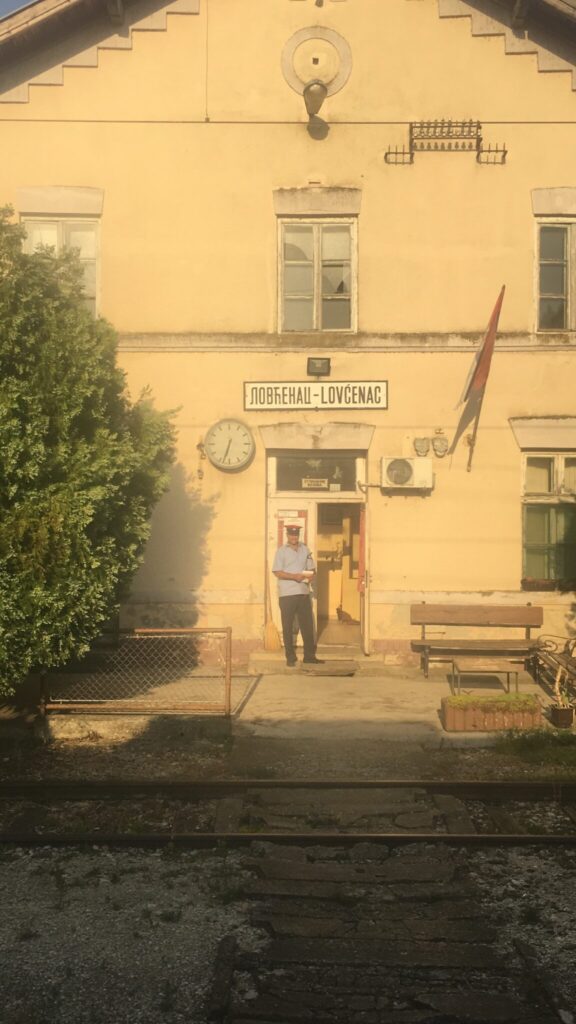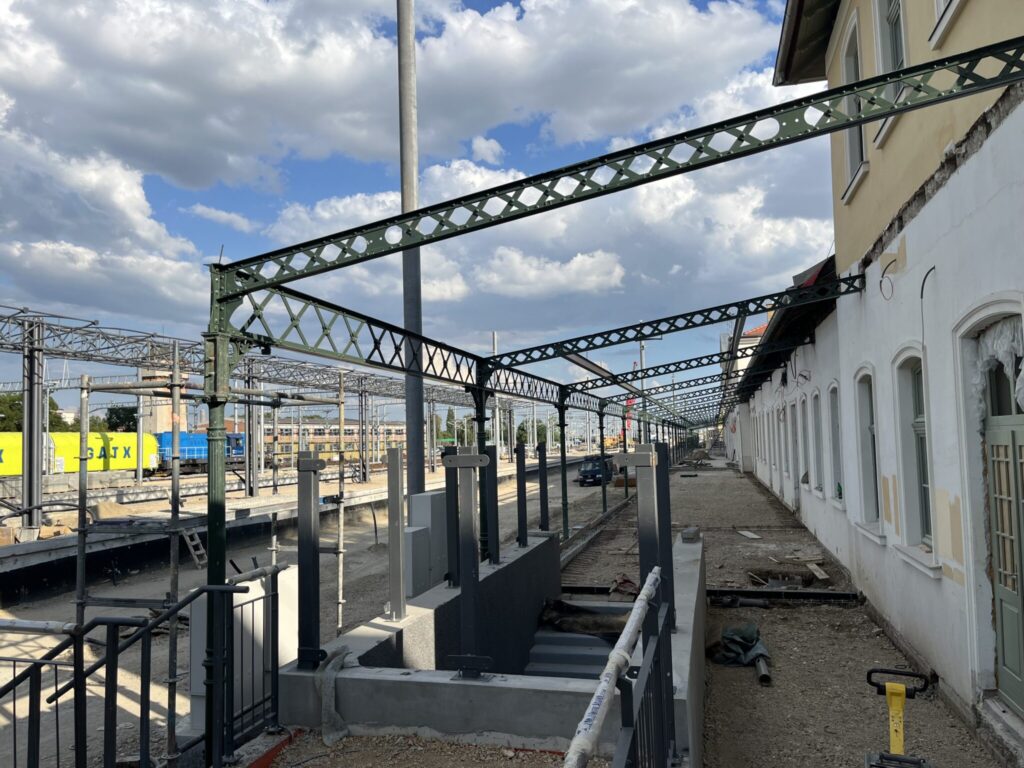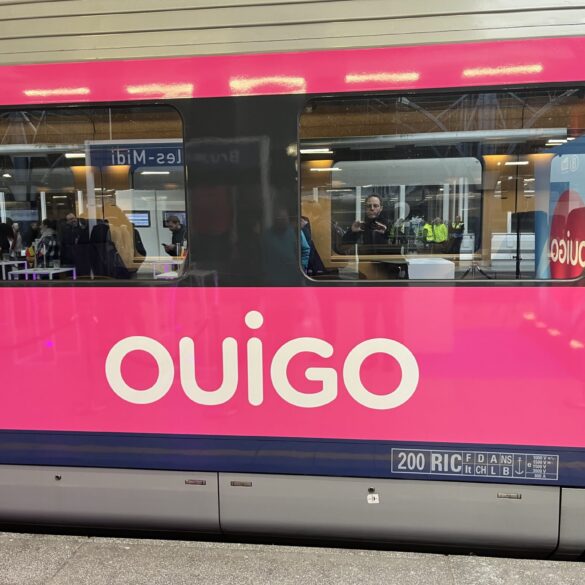
In the summer of 2021, in between COVID lockdowns and needing all sorts of paperwork as a result, I made a trip from Berlin to Beograd, Serbia. I will only come to your event, I told the conference organisers, if I can make the trip by train and bus. I took a train on the Subotica – Novi Sad line in its final months before its closure for renovation, and oh my what an experience that was. Despite flat terrain and a dead straight alignment the train bumped its way along track in a dreadful condition at 30km/h and arrived late in Novi Sad.
That 2021 trip was the partial inspiration for my 2024 #CrossBorderRail South East Europe project – to go and see for myself what was changing in railways in that region, and examine what the EU could do to assist.
In June I battled my way on chronically slow trains in Croatia and trains without windows in Albania. I took the only train in Kosovo, and wondered about phantom trains in North Macedonia. I had arguments with indolent train managers in Montenegro, and choked on the smoke from passengers’ cigarettes in Bosnia.
But there was one country that looked like it had started to turn a corner.
Serbia.
As my train bumped its way from Čačak to Kraljevo, my online ticket was checked by an immaculate member of staff, and the train had air conditioning and wifi. At Pirot, between Niš and Dimitrovgrad on the border to Bulgaria, there were no trains but work ongoing to repair the lines. And most significant of all at Subotica, a melancholy shadow of its former glories in 2021, a newly renovated station was almost ready. New tracks towards the Hungarian border at Kelebia, and southwards towards Novi Sad, were close to complete – a newly-built replacement for the decrepit tracks I had taken three years previously.

Now don’t get me wrong, the way Serbia has done this leaves a lot to be desired.
The modern train I took in Čačak was built in Russia. And the renovation of the entire Beograd – Novi Sad – Subotica corridor has been done with Chinese money and Chinese engineering firms. For me this of course leaves a sour taste – the only place in South East Europe with real progress for passengers is a country with an autocratic President Vučić playing a questionable geopolitical game. The EU has helped out in part as well, but that is often lost in communication.
Then tragedy.
The collapse of the Novi Sad station canopy on 1st November, killing 15 people. And that has been a trigger for massive nation-wide protests.
The opening of the Novi Sad – Subotica line did not happen on 24 November as scheduled, and another rumoured launch date – 8 December – came and went without any information as to what was going on. There is also nothing to suggest there is any problem with the new line itself – DB Systemtechnik gave it a clean bill of health in October – the problem, at least in what is known in public, is with Novi Sad station.
But now a decision has to come.
15th December is train timetable change across Europe. The day when railway companies change their schedules for the coming 12 months. But what about Serbia?
At the time of writing – 11 December – there are no times for any trains available for any station in Serbia (even stations nowhere near Novi Sad!) from 16 December onwards.
This time Vučić just cannot wait. A decision has to be made.
Does he decide to continue the existing temporary timetable (with trains from Beograd terminating at Petrovaradin, rather than Novi Sad), and by doing so acknowledge there is some wider problem? Or does he push ahead, sticks to his policy that the Chinese investment was correct, and with no indication of anything wrong with the track allows the whole Beograd – Subotica corridor to open?
That railway that looked like it was starting to turn a corner faces a fork in the lines between now and the end of this week.


would be nice if we can use Novi Sad station but i think wont be reopen for long time .Any further accident will be end of them .They know how sheety work has been done so keep shut is best option for SNS and Aleksandar Vucic to keep head above water ..but not for long
is subotica – novi sad open now?
No it’s not. Current rumour is it will open 7 July 2025, but at the time of writing – 4 June 2025 – that is not confirmed.
Still not open? The 1130 train of the ZPCG from Podgorica lists Subotica as final destination, in August 2025, but that might be wishful thinking.
Correct. That is a data error from ZPCG. That train only goes as far as Ranžirna on the edge of Novi Sad.
Current best guess: freight trains sometime end of August / early September. Passenger trains sometime autumn 2025.
Thanks a lot for the information.
Would be great if the 1130 would later continue to Budapest once the rapid train line Subotica-Budapest is completed.
BTW – are there currently trains from Novi Sad to Subotica at all? So that one could go by local transport from Ranžirna to ТПС Нови Сад to catch the train there?
I *think* the only way to do it currently is cross Novi Sad by bus, from Novi Sad-Petrovaradin to Novi Sad-Ranžirna, and from there take a train to Sombor, and change in Sombor to get to Subotica. Having taken most of that line through Sombor be warned though: it is hellish slow! A bus from Novi Sad to Subotica is probably a better option!
Actually, this reminds me to the current status of the main train line between Munich and Berlin in Germany… This summer, the four track line is closed twice for several weeks for constructions (pending four tracks) between Nürnberg and Bamberg. You get bus replacements, which easily quadruple travelling times in this segment. Forget German efficency, it always has been a myth…